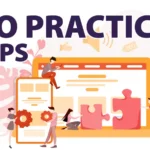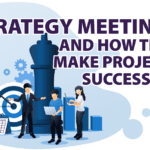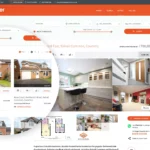Have you ever been involved in a website project or app-building project? If you have you were likely very, very excited right at the beginning! Everything’s really exciting and you can’t wait to get to the end and see the final product.
Then you may have experienced some sort of remorse halfway through the project, where everything seems to go quiet. You’re not quite sure what’s going on. You don’t know when it’s going to be finished. You email your developer or designer, and you don’t get emails back for quite a while, and you feel stuck at this point where you just don’t know what’s going on.
So, I’ve got a communication/project management tip for you today: how to overcome that feeling and how to keep a project on track, both for you and also your web designer or web developer.
Introducing the standing meeting
We use a really simple method. We call it a standing meeting. It’s a meeting that we set up right at the very beginning of a project. It’s set on the same day, the same time every single week, and sometimes the meetings might only last 10 minutes. Sometimes they might last half an hour. It depends on what’s happened the previous week. So, what it does is it takes away that nervous feeling of, you’re not quite sure when you’re next going to hear back from your developer or designer. You know it’s in the diary every week. If you have any concerns or if you want to know how the project’s performing, you’ve got that meeting booked in to talk to the team and work out exactly how the project’s coming along.
The meetings should be really broken down into four main sections.
1) Victories
We call the first section ‘Victories’ – essentially what we achieved last week. So, any milestones that have been achieved and cleared, any deliverables that have needed to be approved, reaching a decision on any matters that have been brought up in the previous meeting, presenting a deliverable so you can see how the project’s coming along, and receiving feedback. And this is a two-way thing. This is for both you, as the client paying for the project, and also the designer and developer. So, with any work project or any application design, there’s going to be milestones and decisions needed on both sides.
2) Issues
The second main point of the standard meeting is ‘Issues’. Where did we fall short last week? It happens. We’re all human and it’s a natural part of any project. What deliverables were late? Why were they late? Now, it could be a simple explanation that you’re waiting for someone to get some feedback to you. It may be that your developer who’s working on that part of the project was off the previous week, which is why it’s certainly delayed. Maybe the designer has asked for feedback on a design and hasn’t got it. Incomplete content, poor stakeholder communication, and changing scope requirements are all examples. Certainly with a longer project that might last anywhere between three months, six months, or sometimes longer, scope changes do happen. This will obviously have a knock-on effect on other parts of the project.
3) Priorities
The third part of the meeting is ‘Priorities’ – what’s going to get done next week? What can we agree on that will be finished next week? What deliverable is a priority for this coming week? Basically, what’s going to be worked on between the standard meeting you’re currently in and the standard meeting the following week. You can make decisions on what you think is best to be done in conjunction with the designer and developer, and it just makes for a much smoother project.
4) Metrics
And the fourth area of the standard meeting is ‘Metrics’. So, how is the project progressing? This means milestones, completed milestones, outstanding milestones, next milestone deadline, go-live deadline, and any scope change orders that happen within the project.
These four elements, victories, issues, priorities and metrics, in a standing meeting every single week, you are going to be absolutely clear where you are with the project. You’re going to know if it’s on target for your launch date, or whether some additional work needs to be put in to get the project back on track.
If you implement that with any project that you have, you’re not going to get this feeling of just not knowing what’s going on. No one likes that feeling, and it gets a little bit awkward with that odd conversation or sort of prickly email. A standing meeting gets rid of all of that. It lays everything out in that meeting every single week, so everyone is absolutely clear where they’re going.
At the end of it, you want to be really happy with the project that’s been completed, but also be on really good terms with the design and development team, for future projects and ongoing website support.
You don’t want to get to the end of a project and think, “Oh my goodness, I just don’t want to go through that again and just move on and have the same issue.” So, we thoroughly recommend it as a communication tool and project management technique. Standing meeting each and every week. Any questions on how to run the meeting, I’d be quite happy to jump on a call and help anybody!
Book a No-Obligation 30 minutes call with our web design experts
Our 30 minute “getting-to-know-you” phone call is designed to see if your project is something we are able to help with. Be prepared to discuss your business fundamentals, your hopes & expectations of your project and your current business challenges. Schedule a call now.




